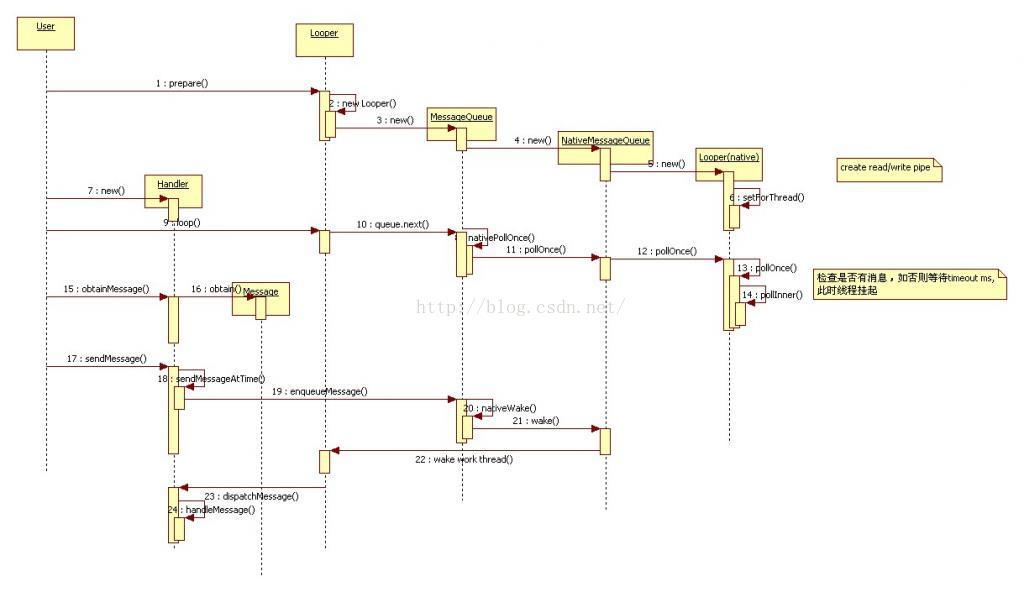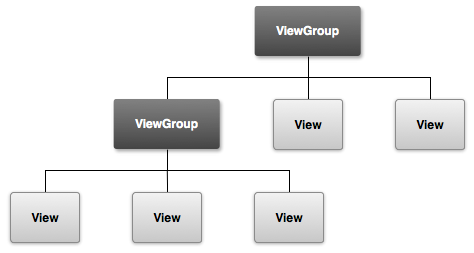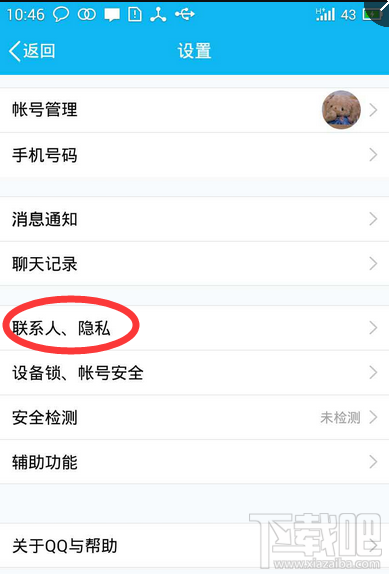編輯:關於Android編程
主線程之所以可以接收Handler消息,是因為主線程在啟動時,已經創建了Looper對象。
/*** ActivityThread.java ***/
public static void main(String[] args) {
Looper.prepareMainLooper();
ActivityThread thread = new ActivityThread();
thread.attach(false);
if (sMainThreadHandler == null) {
sMainThreadHandler = thread.getHandler();
}
Looper.loop();
}
而我們如果直接創建一個線程,是無法接收Handler的消息的,需要為該線程創建一個Looper對象才可以。
創建帶有Looper的線程的方法如下:
class LooperThread extends Thread {
public Handler mHandler;
public void run() {
Looper.prepare();
mHandler = new Handler() {
public void handleMessage(Message msg) {
// process incoming messages here
}
};
Looper.loop();
}
}
實際上,主線程的Looper創建,和上面的過程是一樣一樣的。
Android應用程序是通過消息來驅動的,每一個擁有Looper的線程(如主線程),都有一個消息隊列,其他線程向消息隊列裡放入消息,Looper線程不斷循環地從消息隊列裡取出消息並處理。沒有消息可處理時,Looper線程就進入阻塞狀態,直到有新的消息需要處理時被喚醒。
基於Android6.0的代碼
涉及到的類的代碼位置
frameworks/base/core/java/android/os/Handler.java frameworks/base/core/java/android/os/Message.java frameworks/base/core/java/android/os/MessageQueue.java frameworks/base/core/java/android/os/Looper.java frameworks/base/core/jni/android_os_MessageQueue.cpp system/core/libutils/Looper.cpp
package android.os;
public final class Looper {
//為每一個線程維護一個Looper
static final ThreadLocal sThreadLocal = new ThreadLocal();
//主線程Looper,每個進程只有一個
private static Looper sMainLooper;
//Looper的消息隊列
final MessageQueue mQueue;
//Looper所在的線程
final Thread mThread;
public static void prepare() {
prepare(true);
}
private static void prepare(boolean quitAllowed) {
//同一個線程不能重復創建Looper
if (sThreadLocal.get() != null) {
throw new RuntimeException("Only one Looper may be created per thread");
}
sThreadLocal.set(new Looper(quitAllowed));
}
//創建主線程Looper,由系統調用
public static void prepareMainLooper() {
prepare(false);
synchronized (Looper.class) {
if (sMainLooper != null) {
throw new IllegalStateException("The main Looper has already been prepared.");
}
sMainLooper = myLooper();
}
}
/**
* Returns the application's main looper, which lives in the main thread of the application.
*/
public static Looper getMainLooper() {
synchronized (Looper.class) {
return sMainLooper;
}
}
/**
* Run the message queue in this thread. Be sure to call
* {@link #quit()} to end the loop.
*/
public static void loop() {
final Looper me = myLooper();
if (me == null) {
throw new RuntimeException("No Looper; Looper.prepare() wasn't called on this thread.");
}
final MessageQueue queue = me.mQueue;
for (;;) {
Message msg = queue.next(); // might block
if (msg == null) {
// No message indicates that the message queue is quitting.
return;
}
msg.target.dispatchMessage(msg);
msg.recycleUnchecked();
}
}
/**
* Return the Looper object associated with the current thread. Returns
* null if the calling thread is not associated with a Looper.
*/
public static @Nullable Looper myLooper() {
return sThreadLocal.get();
}
/**
* Return the {@link MessageQueue} object associated with the current
* thread. This must be called from a thread running a Looper, or a
* NullPointerException will be thrown.
*/
public static @NonNull MessageQueue myQueue() {
return myLooper().mQueue;
}
private Looper(boolean quitAllowed) {
mQueue = new MessageQueue(quitAllowed);
mThread = Thread.currentThread();
}
//直接退出,回收消息隊列裡所有的消息
public void quit() {
mQueue.quit(false);
}
//處理完當前的消息,回收消息隊列裡要在將來某個時刻處理的消息
public void quitSafely() {
mQueue.quit(true);
}
/**
* Gets the Thread associated with this Looper.
*
* @return The looper's thread.
*/
public @NonNull Thread getThread() {
return mThread;
}
/**
* Gets this looper's message queue.
*
* @return The looper's message queue.
*/
public @NonNull MessageQueue getQueue() {
return mQueue;
}
}
調用Looper.prepare()會new一個Looper對象,Looper的構造函數中,又會new一個消息隊列MessageQueue。
/*** MessageQueue.java ***/
MessageQueue(boolean quitAllowed) {
mQuitAllowed = quitAllowed;
mPtr = nativeInit();
}
通過JNI機制,MessageQueue調用nativeInit()函數,在JNI層創建一個NativeMessageQueue對象,並將該對象的句柄保存在mPtr變量中。代碼如下
/*** android_os_MessageQueue.cpp ***/
static jlong android_os_MessageQueue_nativeInit(JNIEnv* env, jclass clazz) {
NativeMessageQueue* nativeMessageQueue = new NativeMessageQueue();
if (!nativeMessageQueue) {
jniThrowRuntimeException(env, "Unable to allocate native queue");
return 0;
}
nativeMessageQueue->incStrong(env);
return reinterpret_cast(nativeMessageQueue);
}
NativeMessageQueue初始化時又會創建一個native層的Looper對象。
/*** android_os_MessageQueue.cpp ***/
NativeMessageQueue::NativeMessageQueue() :
mPollEnv(NULL), mPollObj(NULL), mExceptionObj(NULL) {
mLooper = Looper::getForThread();
if (mLooper == NULL) {
mLooper = new Looper(false);
Looper::setForThread(mLooper);
}
}
native層的Looper和java層的Looper是對應的,主要負責喚醒java層的Looper,後面會講到喚醒原理。
Handler有多個構造方法,主要分為兩類,一類帶有Looper參數,構造時可以直接把Looper對象傳進去;另一類不帶Looper參數,這一類構造會調用到下面這個隱藏的構造方法。
/*** Handler.java ***/
public Handler(Callback callback, boolean async) {
mLooper = Looper.myLooper();
if (mLooper == null) {
throw new RuntimeException(
"Can't create handler inside thread that has not called Looper.prepare()");
}
mQueue = mLooper.mQueue;
mCallback = callback;
mAsynchronous = async;
}
由上面的代碼可知,
調用Looper.loop()開啟消息循環。loop()的主要邏輯如下
/*** Looper.java ***/
public static void loop() {
//獲取當前線程的Looper對象
final Looper me = myLooper();
//獲取Looper對象的消息隊列
final MessageQueue queue = me.mQueue;
for (;;) {
//循環從消息隊列中獲取消息
//消息隊列中沒有消息,或者都是若干時間後才要處理的消息,就會阻塞在這裡
//等有新的需要馬上處理的消息或者到時間後,就會取出消息繼續執行。
Message msg = queue.next();
//從消息隊列取出消息後分發處理
msg.target.dispatchMessage(msg);
//處理完消息後回收消息對象
msg.recycleUnchecked();
}
}
可以看出,Looper.loop()是一個循環,其後面的代碼一般不會執行,除非調用了Looper的quit方法退出消息循環。
/*** MessageQueue.java ***/
Message next() {
//mPtr指向NativeMessageQueue對象
final long ptr = mPtr;
if (ptr == 0) {
return null;
}
int nextPollTimeoutMillis = 0;
for (;;) {
if (nextPollTimeoutMillis != 0) {
//不知道是干啥的
Binder.flushPendingCommands();
}
nativePollOnce(ptr, nextPollTimeoutMillis);
synchronized (this) {
final long now = SystemClock.uptimeMillis();
Message prevMsg = null;
Message msg = mMessages;
if (msg != null) {
if (now < msg.when) {
//下個消息還沒有准備好,需要延時處理
nextPollTimeoutMillis = (int) Math.min(msg.when - now, Integer.MAX_VALUE);
} else {
// Got a message.
if (prevMsg != null) {
prevMsg.next = msg.next;
} else {
mMessages = msg.next;
}
msg.next = null;
if (DEBUG) Log.v(TAG, "Returning message: " + msg);
msg.markInUse();
//取出消息,並從消息隊列移除
return msg;
}
} else {
// No more messages.
nextPollTimeoutMillis = -1;
}
// Process the quit message now that all pending messages have been handled.
if (mQuitting) {
dispose();
return null;
}
}
// Run the idle handlers.
// 省略了 idle handlers 的相關處理
// While calling an idle handler, a new message could have been delivered
// so go back and look again for a pending message without waiting.
nextPollTimeoutMillis = 0;
}
}
nativePollOnce(ptr, nextPollTimeoutMillis);這個函數最終會調用到native Looper的pollnce()函數
/*** Looper.cpp ***/
Looper::pollOnce(int timeoutMillis, int* outFd, int* outEvents, void** outData) {
int result = 0;
for (;;) {
//...
if (result != 0) {
//...
return result;
}
result = pollInner(timeoutMillis);
}
}
pollInner這個函數比較長,而且涉及到了Linux的epoll系統調用接口和管道等概念,這裡不做介紹,只截取了部分代碼,如下
/*** Looper.cpp ***/
int Looper::pollInner(int timeoutMillis) {
//這裡就是等待消息,真正阻塞的地方!!!
int eventCount = epoll_wait(mEpollFd, eventItems, EPOLL_MAX_EVENTS, timeoutMillis);
//some error
if (eventCount < 0) {
result = POLL_ERROR;
goto Done;
}
//沒有新消息,超時喚醒。
//說明消息隊列裡有delay的消息到時間該處理了。
if (eventCount == 0) {
result = POLL_TIMEOUT;
goto Done;
}
for (int i = 0; i < eventCount; i++) {
int fd = eventItems[i].data.fd;
uint32_t epollEvents = eventItems[i].events;
if (fd == mWakeEventFd) {
if (epollEvents & EPOLLIN) {
awoken();
} else {
ALOGW("Ignoring unexpected epoll events 0x%x on wake event fd.", epollEvents);
}
} else {
//......
}
}
}
總之,有新消息到來或超時喚醒時,都會從這個函數中返回到MessageQueue.next()函數中的nativePollOnce(ptr, nextPollTimeoutMillis)處,繼續往下執行。
上面說了,有新消息到來或超時時間到時,epoll_wait(mEpollFd, eventItems, EPOLL_MAX_EVENTS, timeoutMillis)可以被喚醒。
有超時時間,說明已經有延時消息被發過來了,只是沒有馬上處理。那麼什麼時候會有消息發過來呢?
先來看一下java層消息的發送流程。
發送消息有以下幾種方法:
1.使用Message的sendToTarget():會調用Handler的sendMessage(Message msg)方法
2.使用Handler的sendXXX系列和postXXX系列:
sendMessage(Message msg) sendMessageDelayed(Message msg, long delayMillis) sendMessageAtTime(Message msg, long uptimeMillis) sendEmptyMessage(int what) sendEmptyMessageDelayed(int what, long delayMillis) sendEmptyMessageAtTime(int what, long uptimeMillis) post(Runnable r) postDelayed(Runnable r, long delayMillis) postAtTime(Runnable r, long uptimeMillis) //下面兩個方法會將Message插入到消息隊列的最前端 sendMessageAtFrontOfQueue(Message msg) postAtFrontOfQueue(Runnable r)以上函數最終都會調用到下面的函數,將Message放到消息隊列裡去。
/*** Handler.java ***/
private boolean enqueueMessage(MessageQueue queue, Message msg, long uptimeMillis) {
msg.target = this;
if (mAsynchronous) {
msg.setAsynchronous(true);
}
return queue.enqueueMessage(msg, uptimeMillis);
}
/*** MessageQueue.java ***/
boolean enqueueMessage(Message msg, long when) {
synchronized (this) {
msg.markInUse();
msg.when = when;
Message p = mMessages;
boolean needWake;
//如果隊列為空||插入到隊首||消息處理時間早於隊首消息處理時間
if (p == null || when == 0 || when < p.when) {
// New head, wake up the event queue if blocked.
msg.next = p;
mMessages = msg;
needWake = mBlocked;
} else {
needWake = mBlocked && p.target == null && msg.isAsynchronous();
Message prev;
//循環遍歷隊列裡的消息,按處理時間先後順序,將新消息插入到合適位置
for (;;) {
prev = p;
p = p.next;
if (p == null || when < p.when) {
break;
}
if (needWake && p.isAsynchronous()) {
needWake = false;
}
}
msg.next = p;
prev.next = msg;
}
//注意了注意了 wake wake
if (needWake) {
nativeWake(mPtr);
}
}
return true;
}
需要說明的是,msg.when變量表示該消息在什麼時間點(系統啟動時間 SystemClock.uptimeMillis())處理。
首先來了解一下什麼是synchronization barrier。
(見MessageQueue的postSyncBarrier()方法和removeSyncBarrier(int token)方法。)
在Message中有同步消息和異步消息之分。
(見Message的setAsynchronous(boolean async)方法和isAsynchronous()方法)
同步分割欄也是一個Message類型的對象,只不過它的target為空,如上面代碼中p.target == null就代表p是一個同步分割欄。
簡單的說,如果消息隊列裡沒有同步分割欄,同步和異步消息是沒有區別的。
如果隊列裡有同步分割欄,則其後面的同步消息,即使時間到了,也不會被執行,除非同步分割欄被移除。而異步消息則不會受此限制。
把消息插入到消息隊列時,以下兩種情況才需要喚醒。
一種情況是,新消息插入隊首。
另一種情況是,隊首是一個同步分割欄,而新插入的消息之前沒有異步消息。
其他情況說明消息隊列中的消息正在被處理,或者新消息前有等待處理的消息,新消息的處理時間還沒到,則不需要喚醒。
/*** MessageQueue.java ***/ nativeWake(mPtr);
/*** android_os_MessageQueue.cpp ***/
static void android_os_MessageQueue_nativeWake(JNIEnv* env, jclass clazz, jlong ptr) {
NativeMessageQueue* nativeMessageQueue = reinterpret_cast(ptr);
nativeMessageQueue->wake();
}
/*** android_os_MessageQueue.cpp ***/
void NativeMessageQueue::wake() {
mLooper->wake();
}
/*** Looper.cpp ***/
void Looper::wake() {
uint64_t inc = 1;
ssize_t nWrite = TEMP_FAILURE_RETRY(write(mWakeEventFd, &inc, sizeof(uint64_t)));
if (nWrite != sizeof(uint64_t)) {
if (errno != EAGAIN) {
ALOGW("Could not write wake signal, errno=%d", errno);
}
}
}
涉及到了Linux的epoll系統調用接口和管道等概念,不做介紹,有興趣可以自行查閱資料。
Looper線程喚醒後,從消息隊列取出消息,然後進行分發處理。
msg.target.dispatchMessage(msg);Message的成員變量target就是要處理該Message的目標Handler,消息分發函數如下
/*** Handler.java ***/
public void dispatchMessage(Message msg) {
if (msg.callback != null) {
handleCallback(msg);
} else {
if (mCallback != null) {
if (mCallback.handleMessage(msg)) {
return;
}
}
handleMessage(msg);
}
}
前面說了,發送消息使用Handler的sendXXX方法和postXXX方法。
簡單總結一下:java層和native層各有一個Looper。
java層Looper:維護一個消息隊列,不斷循環從消息隊列中取消息並處理。隊列中沒有消息時等待,其他線程將消息插入消息隊列後,Looper並不是馬上取出消息處理,而是等待喚醒。
native層Looper:與java層的對應,使用Linux的epoll系統調用,監聽事件發生(文件有內容寫入),喚醒java層Looper。
消息隊列:中的消息是按處理時間排序。
其他線程將消息插入到消息隊列中,然後根據需要,調用native接口喚醒java層Looper處理消息。
對於延時消息,由MessageQueue計算延時時間,利用epoll_wait的超時機制,超時喚醒。

 深入理解Android事件分發機制
深入理解Android事件分發機制
Android事件分發,參考了網上的很多資料。基本基於android2.2的源碼來分析,因為即使是新的版本,裡面的原理思想也沒有改變。有了大神的肩膀,我在理解了其原理的基
 Android應用開發中自定義ViewGroup的究極攻略
Android應用開發中自定義ViewGroup的究極攻略
支持margin,gravity以及水平,垂直排列最近在學習android的view部分,於是動手實現了一個類似ViewPager的可上下或者左右拖動的ViewGroup
 手機qq能拉黑好友嗎 手機qq怎麼拉黑好友
手機qq能拉黑好友嗎 手機qq怎麼拉黑好友
手機qq用了那麼久,好友成千上萬,總有一些不想聊的人,怎麼把他加入黑名單呢?下面小編就來教教大家手機qq怎麼拉黑好友。在手機qq上是不能設置黑名單的,但我們
 Android程序crash處理
Android程序crash處理
在實際項目開發中,會出現很多的異常直接導致程序crash掉,在開發中我們可以通過logcat查看錯誤日志,Debug出現的異常,讓程序安全的運行,但是在開發